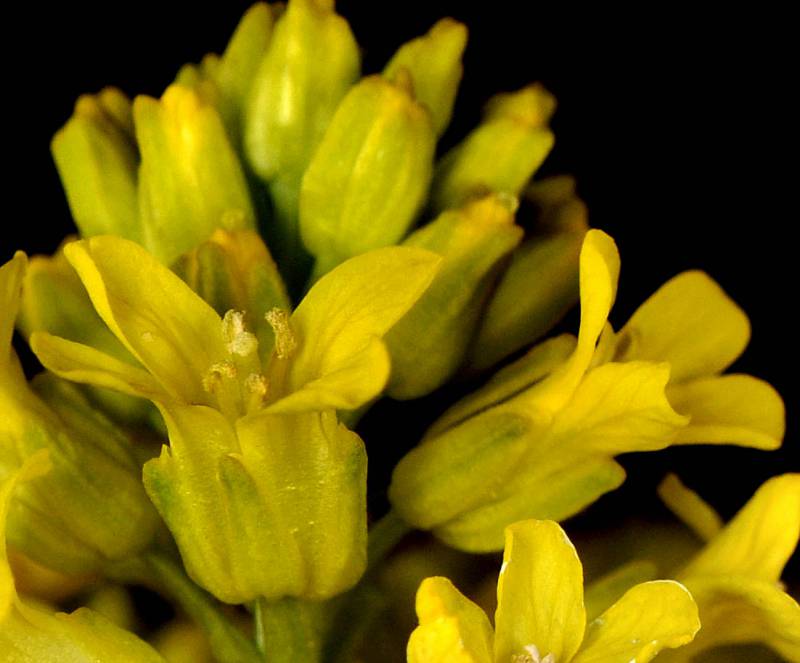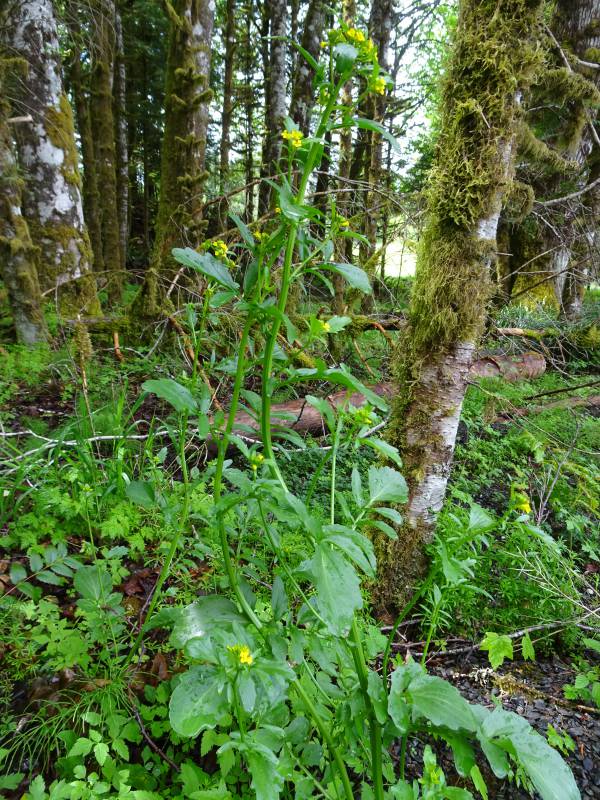Barbarea vulgaris
Barbarea verna
yellow rocket, bitter wintercress
Belle Isle cress, landcress, early yellow rocket, scurvygrass, early wintercress
Basal leaves long-petiolate, up to 12 cm. long, the blade usually lyrate-pinnatifid to pinnate, the lateral lobes 1-3(-5) on each side, entire to round-toothed, the terminal lobe ovate, entire or irregularly toothed, the petiole often with long, marginal hairs;
cauline leaves alternate, glabrous, lobed, becoming simple and sagittate.
Inflorescence of compound or single and terminal racemes, with reduced racemes in the lower leaf axils; pedicles slender, 2-3 mm. long;
sepals 4, pale yellowish-green, 2 mm. long;
petals 4, yellow, spatulate-oblanceolate, 6-8 mm. long;
stamens 6;
style distinctly beak-like, 2-3 mm. long;
stigma slightly lobed.
Siliques 1-3 cm. long and 1.5-2.5 mm. broad, slightly compressed, 4-angled, strongly 1-nerved full length, erect or strongly ascending, nearly straight.
Barbarea vulgaris
Barbarea verna
- Local floras:
BC,
CA,
OR,
WA
- Local Web sites:
CalFlora,
CalPhotos,
Flora NW,
PNW Herbaria
WildflowerSearch
iNaturalist (observations)
USDA Plants Database
- LBJ Wildflower Center
- SEINet
- Plants of the World Online
- Encyclopedia of Life
- Wikipedia
- Google Image Search
- Local floras:
BC,
CA,
OR,
WA
- Local Web sites:
CalFlora,
CalPhotos,
Flora NW,
PNW Herbaria
WildflowerSearch
iNaturalist (observations)
USDA Plants Database
- LBJ Wildflower Center
- SEINet
- Plants of the World Online
- Encyclopedia of Life
- Wikipedia
- Google Image Search



